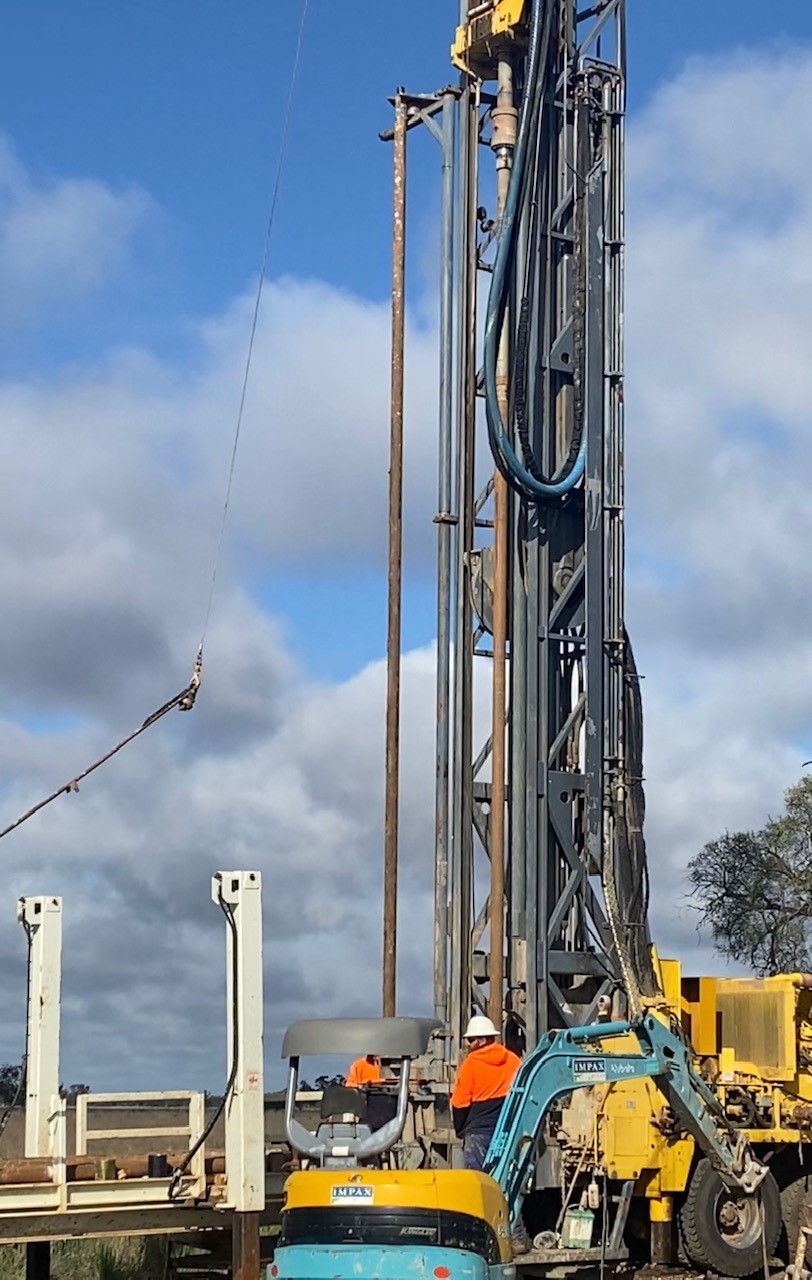Gilgandra bore investigations show promising results for Inland Rail progression
Oliver Brown
22 July 2022, 10:20 PM
 Investigations into possible bore sites in Gilgandra, which are intended to used during and post-construction of the Inland Rail, are nearing completion. Image: Randall Medd, Gilgandra Shire Council.
Investigations into possible bore sites in Gilgandra, which are intended to used during and post-construction of the Inland Rail, are nearing completion. Image: Randall Medd, Gilgandra Shire Council.AN EXPLORATION project into possible sites for new sources of bore water in the Gilgandra shire to help with the implementation of the Inland Rail is nearing completion.
The Water Bore Legacy Project, which is being led by Gilgandra Shire Council and funded by Inland Rail have been investigating water sources at four bore sites since April of this year.
The bore sites have included locations at or along Curban Hall, Wyuna Road, Box Ridge Road and Old Mill Road.
According to the Australian Rail Track Corporation (ARTC), the objective of sourcing new bore sites is to maximise water availability in the area while the local section of the Inland Rail, about 91km of track, is being constructed.
Project manager from Gilgandra Shire Council Randall Medd said the above locations were selected based on a variety of factors.
"The difference with this is we're looking for water sources that are deeper than current stock and domestic bores in the regions we're looking at," Mr Medd said.
"When selecting the sites, we needed to consider what the council and community needs are and then what ARTC needed in terms of requirements for their project and where they'd need water.
"We also looked at access via roads, location of power, so we don't have to run long power lines to power the bores if went through to production, as well as the suitability and availability for drilling."
An ARTC spokesperson said the water bores, if they go ahead, will sink into the Pilliga Sandstone and Purlewaugh Sandstone aquifers to a depth between 200 and 280 metres.
"Once the sites are tested for water quality, volume and flows and the data reviewed, Gilgandra Shire Council will make the information available to the community and seek input on long-term bore viability," the spokesperson said.
This data will then be used to compile applications to have a test bore approved, the data from which will then be sent to the state government for further approvals, including water licenses.
According to Mr Medd, preliminary results from a pump test at the Curban site have had promising results.
"The test results show a decent yield, potentially better than most of the existing shallower aquifer bores in the area,” he said.
“The water quality is also likely to be suitable for construction, stock and domestic purposes."
The Old Mill Road bore is yet to be investigated, however council indicates they hope to start drilling in the next few weeks.

ABOVE: Work will continue at the bore sites over the coming weeks. Image: Randall Medd, Gilgandra Shire Council.
The ARTC spokesperson said this was a positive result for the project and the community.
"The new water bores are intended to increase the water security of the region and mitigate impacts of construction on the local water supply," they said.
"Following construction of the Narromine to Narrabri section of Inland Rail, the water bores will be handed over to the Gilgandra Shire Council so the community can continue to benefit from long-term water security, while reducing the short-term impact on the local community during the construction of Inland Rail."
While both the council and ARTC are pleased with the progress of the Water Bore Legacy Project, questions still remain about other local aspects of the Inland Rail, including the rail crossing intended to cross the Castlereagh Highway near Curban.
The crossing has generated controversy over the lack of clarity in whether or not the design would accommodate for 'grade separation', which could come in the form of either an overpass or underpass.
The ARTC spokesperson said the level crossing on the Castlereagh Highway, in the current reference design, is an active level crossing with signals and boom gates.
"The Australian Government has committed $150 million with the NSW Government contributing a further $37.5 million to support the identification and planning for additional potential grade separated interfaces with Inland Rail," they said.
"ARTC Inland Rail continues to work with Transport for NSW in relation to a proposal to have grade separation at this, and other locations, on the Narromine to Narrabri (N2N) alignment."




